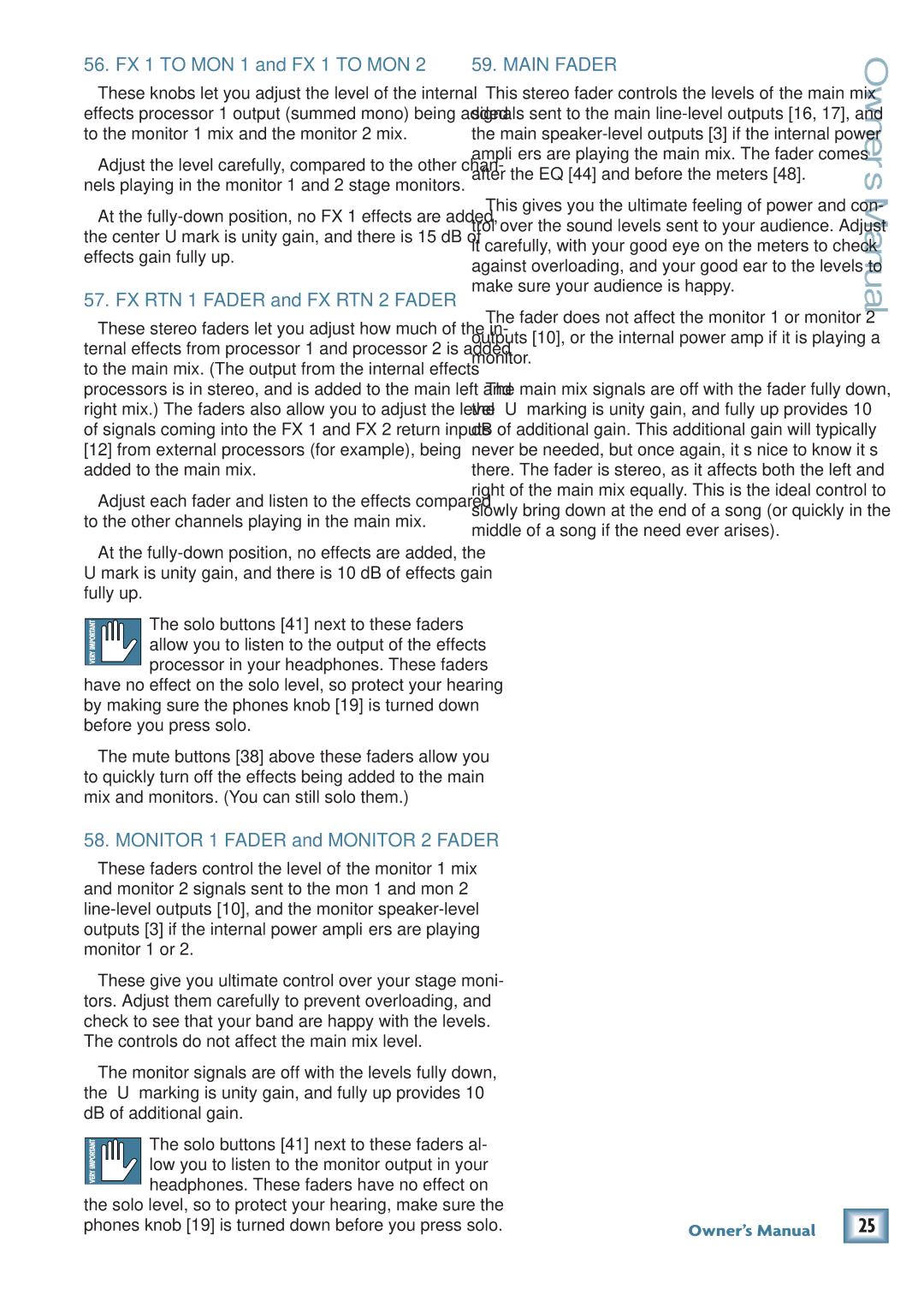
56. FX 1 TO MON 1 and FX 1 TO MON 2
These knobs let you adjust the level of the internal effects processor 1 output (summed mono) being added to the monitor 1 mix and the monitor 2 mix.
Adjust the level carefully, compared to the other chan- nels playing in the monitor 1 and 2 stage monitors.
At the
57. FX RTN 1 FADER and FX RTN 2 FADER
These stereo faders let you adjust how much of the in- ternal effects from processor 1 and processor 2 is added to the main mix. (The output from the internal effects processors is in stereo, and is added to the main left and right mix.) The faders also allow you to adjust the level of signals coming into the FX 1 and FX 2 return inputs
[12]from external processors (for example), being added to the main mix.
Adjust each fader and listen to the effects compared to the other channels playing in the main mix.
At the
The solo buttons [41] next to these faders
allow you to listen to the output of the effects processor in your headphones. These faders
have no effect on the solo level, so protect your hearing by making sure the phones knob [19] is turned down before you press solo.
The mute buttons [38] above these faders allow you to quickly turn off the effects being added to the main mix and monitors. (You can still solo them.)
59. MAIN FADER
This stereo fader controls the levels of the main mix signals sent to the main
This gives you the ultimate feeling of power and con- trol over the sound levels sent to your audience. Adjust it carefully, with your good eye on the meters to check against overloading, and your good ear to the levels to make sure your audience is happy.
The fader does not affect the monitor 1 or monitor 2 outputs [10], or the internal power amp if it is playing a monitor.
The main mix signals are off with the fader fully down, the “U” marking is unity gain, and fully up provides 10 dB of additional gain. This additional gain will typically never be needed, but once again, it’s nice to know it’s there. The fader is stereo, as it affects both the left and right of the main mix equally. This is the ideal control to slowly bring down at the end of a song (or quickly in the middle of a song if the need ever arises).
Owner’s Manual
58. MONITOR 1 FADER and MONITOR 2 FADER
These faders control the level of the monitor 1 mix and monitor 2 signals sent to the mon 1 and mon 2
These give you ultimate control over your stage moni- tors. Adjust them carefully to prevent overloading, and check to see that your band are happy with the levels. The controls do not affect the main mix level.
The monitor signals are off with the levels fully down, the “U” marking is unity gain, and fully up provides 10 dB of additional gain.
The solo buttons [41] next to these faders al- |
|
|
low you to listen to the monitor output in your |
|
|
headphones. These faders have no effect on |
|
|
the solo level, so to protect your hearing, make sure the |
| 25 |
phones knob [19] is turned down before you press solo. | Owner’s Manual |
